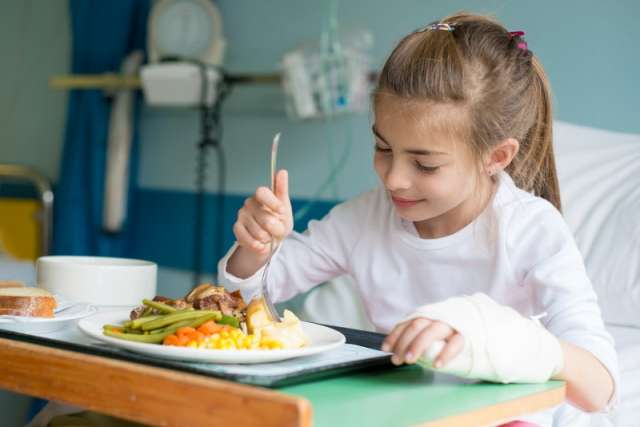Post-intensive care syndrome (PICS) is a relatively new term to describe a cluster of health disorders that affect patients who have undergone treatment in the intensive care unit (ICU).
While patients with PICS are often treated by multiple clinicians to address both physical and psychological concerns, proper nutrition, too, is essential for their healing, and dietitians are key members of the care team.
Peggy Dai, senior dietitian at Ronald Reagan UCLA Medical Center, says malnutrition is not uncommon among patients with PICS.
“When patients are just getting out of the ICU, 70% to 80% of them have poor appetite,” she said. “Some are experiencing changes in taste, and it causes them to not eat enough food.”
Because they are not enjoying eating, many patients with PICS get less than 50% of their appropriate nutritional intake, Dai said. That, in turn, hampers their ability to fully recover.
Assessing nutrition for critically ill patients
Patients who are admitted to the ICU with chronic illnesses, such as cancer, may already be poorly nourished. In that case, dietitians have a narrower window to determine the nutritional needs for their clients.
“I like to assess my patients who need immediate help right away. They may not be able to wait a couple of days, and their nutrition becomes a major key to their recovery,” said Dai. “The important thing is getting them nutritionally stable right away, but we understand that some critically ill patients may not metabolize the nutrients very well.”
Depending on the individual, nutritionally stabilizing a post-ICU patient can take 10 to 14 days, Dai said. However, making lifestyle changes once they are out of the ICU often plays a major role in how well a patient recovers.
Determining malnutrition in each ICU patient
“We’re focusing on how we define malnutrition,” Dai said. “Sometimes, patients can feel like they’re eating fine, but they don’t realize they’re not getting the right nutrients in their food.”
But malnutrition may look different from one patient to another, so learning to identify its signs is important.
“Let’s say you have a patient in the ICU with kidney disease or diabetes; it may take months to develop an appropriate nutrition plan for them. But for a patient with COVID who is losing muscle mass within days of admission, we have to figure things out on a different time frame,” Dai said.
Challenges of ensuring proper nutrition for PICS patients
Dai said there can be hurdles to treating patients with PICS. One is to make patients understand that nutrition is an important part of their recovery.
Another challenge is to provide patients who are in the ICU for lengthy periods with a variety of palatable choices that will encourage them to eat and enhance their enjoyment. That challenge can also be magnified by the religious or cultural preferences of patients.
“As nutrition professionals, we need to be able to meet patients somewhere in the middle,” Dai said. “We are working on increasing the variety of foods with healthy benefits we can offer.”



